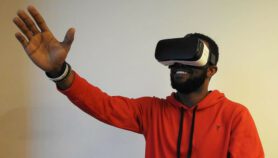By: Mićo Tatalović
Send to a friend
The details you provide on this page will not be used to send unsolicited email, and will not be sold to a 3rd party. See privacy policy.
[LONDON] New ways of doing business, often triggered by novel technologies, have up-ended public and private sector roles in development — offering a new landscape of healthcare opportunities for women and children in developing countries, according to a UN report.
The fundamental change is that it is now the private sector that is creating infrastructure, and the public sector is arriving afterwards to exploit it for health purposes, according to the co-author of the report, Tore Godal, a medical doctor and special advisor on global health to the Norwegian prime minister.
The report, ‘Innovating for Every Woman, Every Child’, published last week (12 September) by The Lancet, highlights business models that could harness new infrastructure to improve the health of women, children and infants in low-income countries.
Examples include LifeSpring Hospitals in India, a chain of low-cost hospitals that provide healthcare to urban women who earn roughly US$3–$6 a day; text message printers that connect African laboratories to community clinics via mobile phone networks; D-Tree International in Zanzibar, which provides health workers with easy-to-use mobile phones that guide them through the screening, examination, counselling and treatment of patients; and a safe, affordable and long-lasting meningitis vaccine called MenAfriVac, designed specifically for Africa.
Mobile phone technology, which could lead to phenomena such as mHealth, is the "most profound game changer" in healthcare at the moment, said Godal, who is also a co-chair of the UN secretary-general’s Every Woman, Every Child Innovation Working Group.
In certain situations, new technologies are eliminating the need for some traditional infrastructure — and making healthcare more efficient at the same time.
Two things are needed to make use of these innovations, Godal said. One is financial support — which can come from multiple sources, such as governments and donors — to measure impact.
The second relates to the lack of knowledge on how to take these innovations forward, with traditional mindsets in both the private and public sectors holding back their successful rollout.
"We need to build up a network of experts and institutions with knowledge about what constitutes sustainable solutions and what is required in a public–private partnership to make them sustainable."
While the report highlights success examples, Godal said there was a need for a similar report on failures.
He also warned that mechanisms must be put in place to prevent the over-commodification of health and maintain healthcare as a fundamental human right.
"The private sector is now, much more than before, engaging in the poorest countries with [the] perspective of long-term investment and returns. We should accept that the private sector is built on profit and within reasonable limits that is something that we shouldn’t try to kill.
"We will need to think about potential side effects or watch for them so that we can take action."
The regulation of the sector rests with the national authorities, he said, but added that they will require the support of UN agencies, which might also play a major role. He gave the example of the WHO, which ‘pre-qualifies’ vaccines, which UNICEF then procures, as a possible model for regulations of other healthcare innovations.













